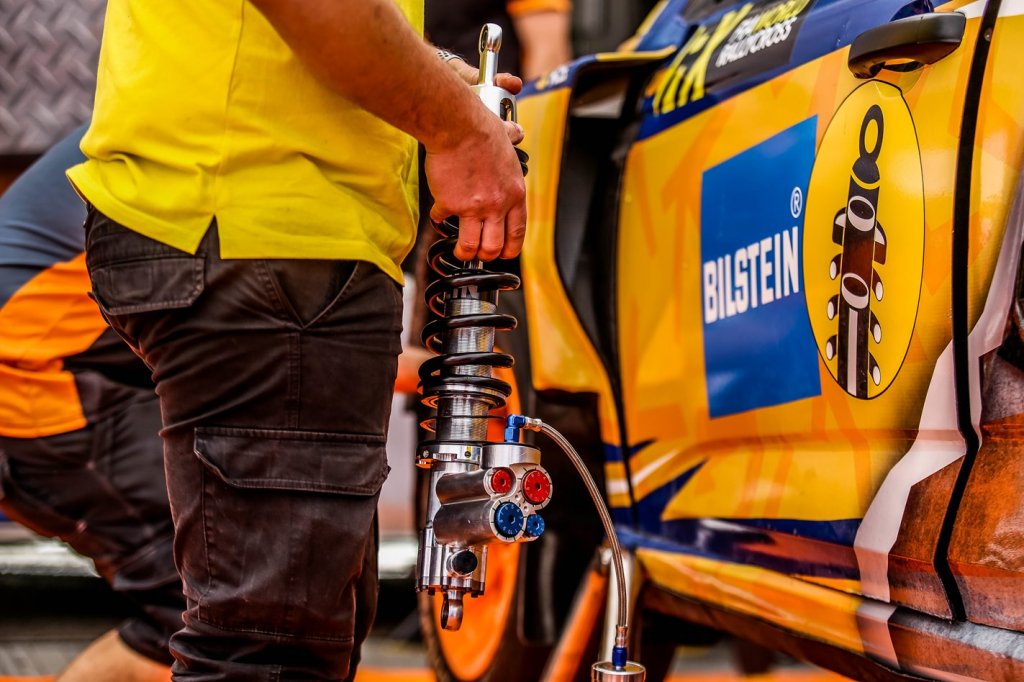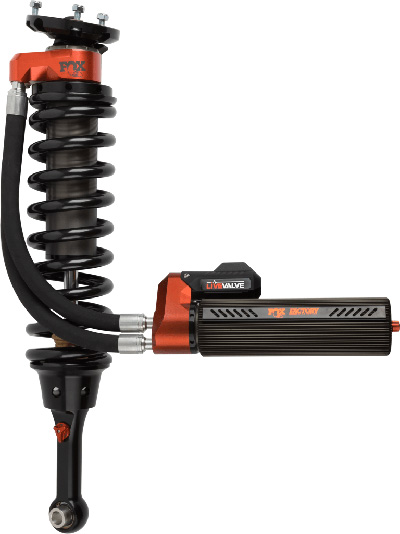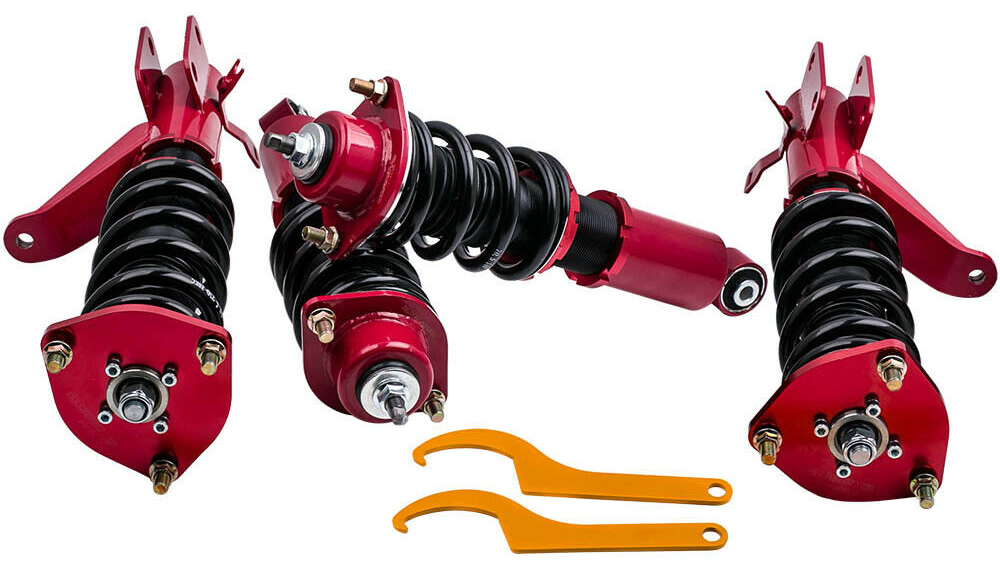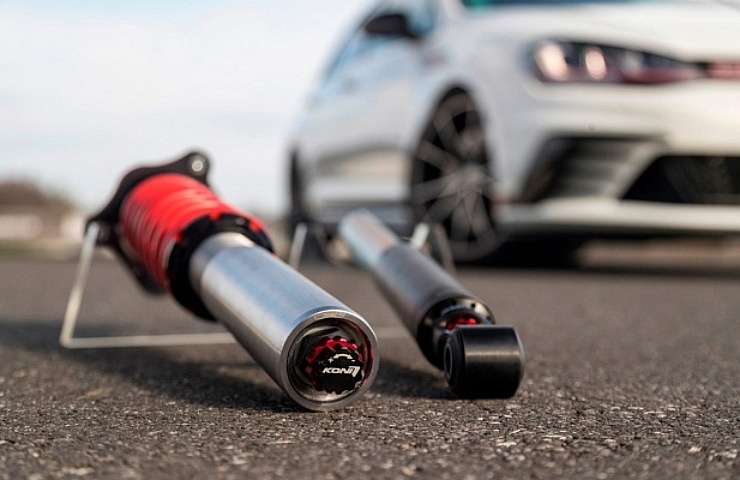Contents
Automakers design cars to satisfy mainstream buyers who want a smooth, gentle ride. But enthusiasts who want to push a vehicle to its handling limits will probably be unsatisfied by a standard suspension setup.
These days, a lot of cars offer electronic “sport” driving modes that modify steering and suspension. But these mild software changes don’t compare to the taut ride provided by new performance shocks and springs.
Shop now for performance shocks
Performance Shocks

The KYB Gas-a-just monotube shock absorber can automatically adjust to performance needs and doesn’t fade due to aeration.
A shock acts like a hydraulic pump. They provide resistance to bumps in the road—dispersing energy by converting it to heat. The shock can apply more resistance when reacting to potholes or use little to no resistance during a smooth ride on flat surfaces.
The same is true for a performance shock. But a performance shock goes beyond using higher-grade materials and sophisticated rates for compression and bounce-back. Every shock brand offers a slightly different strategy and technology—and distinguishing between them requires time behind the wheel. However, you can look for the following key features when shopping for a performance shock.
How They Are Pressurized
A performance shock should prevent the shock oil from foaming. In a non-pressurized shock, the hydraulic fluid can become unstable and aerated (filled with air). So damping can lag behind suspension movement. However, a nitrogen-gas-charged shock provides more consistent control and reduced lag. For a sportier ride, install a gas-charged shock.
Valving and Adjustability

Bilstein makes highly tunable performance shocks for motorsports.
A shock’s valving changes how the piston flow through the fluid. Aftermarket performance shocks have valving tuned to specific driving styles. Some performance shocks are meant for the track but will be too stiff for daily driving.
Common shocks are non-adjustable. That means the compression and valving are fixed. However, the key to an effective shock upgrade is adding the ability to tune the suspension. With an adjustable shock, you can use a knob or wrench to alter the suspension on the fly. The most significant advantage is that you can use one setting for the track or off-road course—and then re-adjust for a smooth drive back home on ordinary streets.
External Reservoirs
With rigorous driving, shock fluids can overheat. However, overheating can be avoiding by using an external reservoir of additional fluid. Some manufacturers use a reservoir attached to the shock, and others have a remote detached reservoir. A performance shock with an external fluid reservoir eliminates worries about the shock overheating or fading.
Top Performance Shock Brands

Fox Racing’s patented External Cooling System reduced shock fluid temperatures by over 100 degrees in a racing environment.
There are dozens of worthwhile shock brands. Here are five of the most popular choices.
Bilstein
The German company has focused on premium suspension components for more than 60 years. Bilstein innovation stems from motorsports.
Belltech
Founded in 1983, California-based Belltech started by producing lowering suspensions for the Chevy pickups. Belltech now offers gear for lowering, lifting, and leveling a wide range of trucks.
Fox Racing
Fox specializes in off-road performance shocks and factory upgraded supsensions. Georgia-based Fox also makes ride dynamics products for bicycles, all-terrain vehicles, and motorcycles.
Koni
Kentucky-based Koni has produced automobile dampers since 1932. The brand is known for the industry’s very first adjustable shock absorber and electronic drag-racing shocks.
KYB
Japan’s KYB is one of the world’s largest manufacturers of shock absorbers. KYB Gas-a-Just, AGX Adjustable, and GR-2 Shocks and Struts are also popular among enthusiasts.
Performance Springs for a Lower Position

BFO racing coilover kit for the Honda Civic
Springs and shocks work in tandem to affect a car’s handling. So it’s wise to upgrade both of them at the same time.
The primary purpose of a performance spring is to lower the car’s center of gravity. As a result, a performance spring drops the car’s body and eliminates the gap between the wheel wells and the tire. Most springs can lower the car by about an inch or more.
A lower stance has functional benefits. For example, it can reduce body roll and prevent nose-dives during a harsh braking effort. It will also keep the rear end from lowering when accelerating. At the same time, a lower stance gives your ride a sleeker look.





